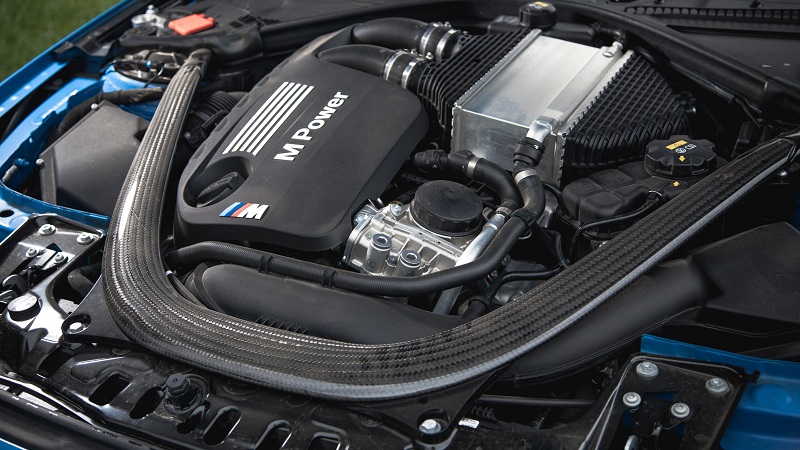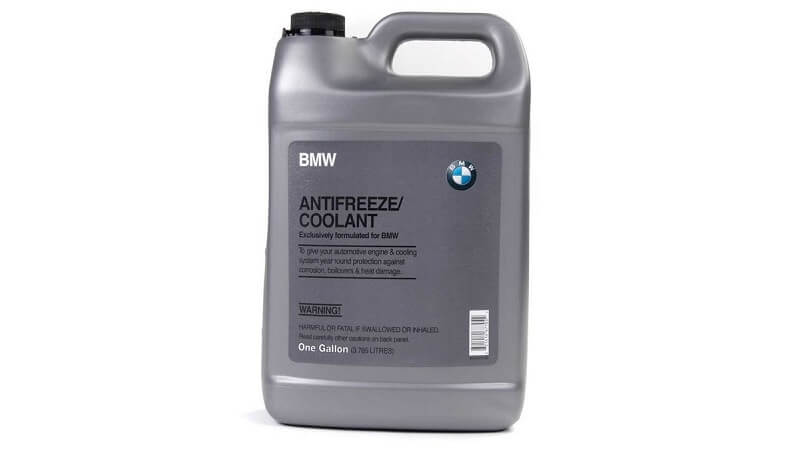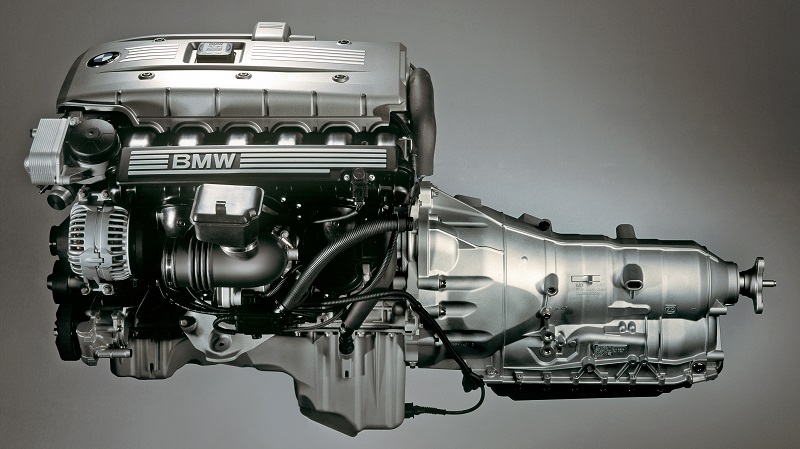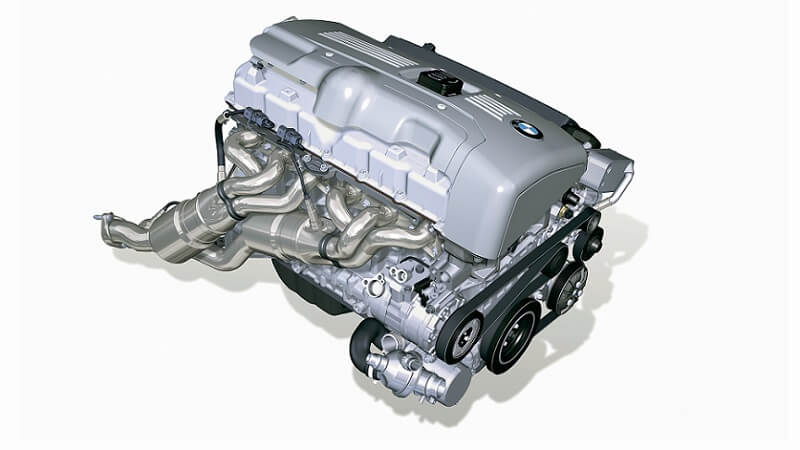The last BMW M-car to feature a naturally-aspirated V8 engine came out in 2013. Its demise came at the hands of the S55 — the first mass-produced M Division engine to feature a turbocharger. The introduction of the S55 was a considerable step away from the kind of engines that typically powered a BMW M car.
However, enthusiasts were left with little reason to complain as the S55 was a phenomenal engine and a solid foundation for the forced-induction engines that are likely to power the M cars in the immediate future. Here’s everything you need to know about the BMW S55.

BMW S55 vs N55
The S55 is a high-performance version of BMW’s N55 engine. The N55 debuted on the F07 5 Series Gran Turismo in 2009 and was the German manufacturer’s first mass-produced engine to feature a twin-scroll turbocharger. In late 2013, BMW introduced the S55 on the F80 M3 and F82 M4, and the engine eventually made its way onto the F87 M2 Competition/CS.
Although based on the N55, the S55 shares little in common. Yes, figures like the 84 mm bore, 89.6 mm stroke, and 2,979 cc displacement are identical, but the two engines couldn’t be further apart concerning the construction.
For starters, there’s the type of turbos that the two engines use: the N55 features a single twin-scroll turbocharger — the exhaust housing is split into two “scrolls” — while the S55 employs two turbochargers.
Other upgrades compared to the N55 include a closed-deck engine block, a revised cooling system, and lighter and stronger engine elements that we’ll take a look at below.
The S55 Technology

As we mentioned earlier, one of the most notable differences between the S55 and the N55 it’s based on is the use of a closed-deck crankcase design. The core improvement that this brings compared to an open-deck design is added rigidity; this, in turn, allows for higher cylinder pressures and consequently more power output.
The cylinder bores also featured a twin-wire arc-sprayed coating — an atomized spray of metal that is a complex but lighter solution than conventional cylinder liners. The pistons themselves are made of a Grafal-coated aluminum alloy that reduces friction. Lastly, the bottom of the crankcase has ventilation holes that bridge two sets of three cylinders for optimum pressure equalization.
Engine Oil Supply and Cooling
Every high-performance engine demands an exceptional heat-management system, without which it cannot work efficiently. For the S55, BMW used a low-weight magnesium oil sump with a unique cover that restricts low flow during hard cornering; this way, the engine is never starved even when the car is under strong lateral acceleration.
Similarly, an oil extraction pump ensures consistent oil flow even during aggressive acceleration and deceleration. These systems provide an uninterrupted flow of oil around the engine, keeping it running as optimally as possible.
The engineers at M GmbH also designed a cooling system that includes a primary radiator that works alongside an additional radiator for the low- and high-temperature circuits. BMW has also equipped the S55 with an electric water cooling pump that helps regulate the temperature of individual components like the turbocharger and transmission.
Performance
Apart from the twin-scroll turbocharger, the S55 also employed the manufacturer’s ‘Valvetronic’ and ‘Double-VANOS‘ valve timing and valve lift technology that allowed linear power delivery across the rev band.
The S55 was manufactured in multiple iterations over its lifespan. Depending on which car it was powering, peak power ranged from 275 hp to 493 hp — the former is still in production on the F87 M2 CS Racing. These iterations are characterized by a meaty rev-band (that goes up past the 7,500 rpm mark) that strikes a perfect balance between low-end torque and high-revving power delivery.
A V8 powered the previous generation of the M3. In its most powerful guise, the smaller S55 produced more power and about 30 percent more torque, largely thanks to the new twin-scroll turbo setup.
BMW S55 VS S58
In 2020, the S55 was succeeded by the S58 engine. Based on the B58TU engine, the S58 is quite similar to the S55 with an identical 3.0 liter, inline-six, twin-turbocharged layout. However, with regard to performance and reliability, some aspects set the two apart.
You should know that the S58 is the better-performing engine right off the bat. It’s more impressive on paper, and that performance translates perfectly well into the real world. That said, if you’re looking to tune your engine, the S55 has more to offer. The S58 is still a relatively young engine, and we reckon it will be a while before you can customize it as much as you can with the S55.
The same extends to the engine’s reliability, too. Given how recent the S58 is, it’s too soon to say if the engine will throw up reasons for concern down the line. However, considering that most of the internals on the S58 are similar to those of the S55, many of the S55’s problems — which we’ll look at below — are likely to trickle down onto the S58.
What BMWs Have The S55 Engine?

The S55 is available on multiple modern-day BMWs, including the F87 M2, F80 M3, and the F82/F83 M4. Higher-spec iterations of this engine producing more power were available with the Competition packages of the cars above.
What Are The Most Common BMW S55 Engine Problems?
Like with every engine, the S55 also showed some common problems that owners of the M2, M3, and M4 reported.
Crank Hub Issues
One of the more severe but rarely reported issues with the M4 is to do with the crank hub. The N55, which the S55 is based on, did very infrequently experience a spun crank hub. Incidentally, the problem did make its way onto the S55.
Having said that, this is a very uncommon problem and is unlikely to happen on a car that’s just a few years old. A spun crank hub will also throw up other engine problems that you should be able to spot; it will affect engine timing, send your M4 into limp mode, and most definitely light up the malfunction light.
Valve Cover Gasket Oil Leaks
This issue, too, stems from similar problems faced by the N55. However, this happens after time, once the rubber valve gasket has worn out, causing it to crack. The plastic valve covers, too, are prone to cracking over time from the high temperatures it is subject to.
An easy way to avoid this issue is to change the parts at regular intervals. Some owners report leaks as early as 60,000 miles, but proper maintenance should get you close to 100,000 miles before a change is due.
Oil Pan Gasket Leaks
The oil pan gasket on the S55 is another component carried over from the N55. Once again, it’s prone to degrading and cracking over time. On most BMW engines, the gasket lasts for over 100,000 miles. On the N55, there have been reports of its failing much earlier, forcing us to believe that the S55 could experience the same fate.
This is not as commonly reported an issue as the oil leak we addressed above, but it’s one that you should be aware of. If you’re picking up a used M3 or M4, check if the oil pan gasket has been replaced recently.
Changing the gasket requires dropping the subframe — this is a labor-intensive and expensive process that you want to try and avoid.
Quality Parts Go a Long Way
Just like with most BMWs, quality parts are a must. The S55 delivers a dynamic driving experience only when it’s at 100% mechanically. Here at Bimmers.com, we carry a wide range of Genuine, OEM, and quality aftermarket parts for your S55, as well as any other BMW. Head over to our online store, select your vehicle from the drop-down menu, and you’ll find a catalog of parts that are guaranteed to fit your car!





